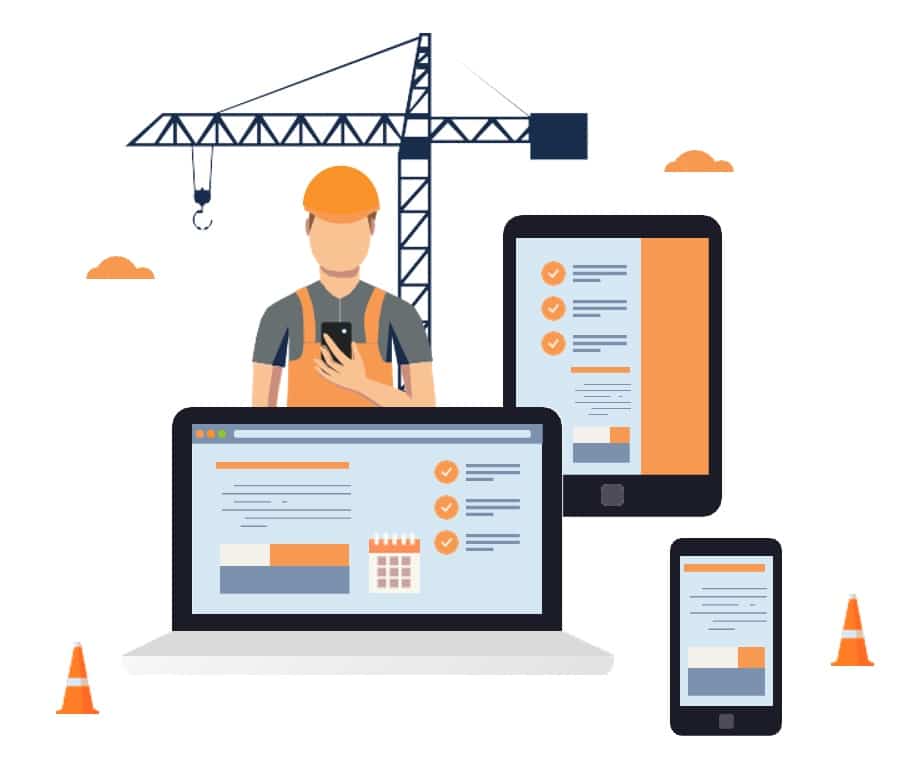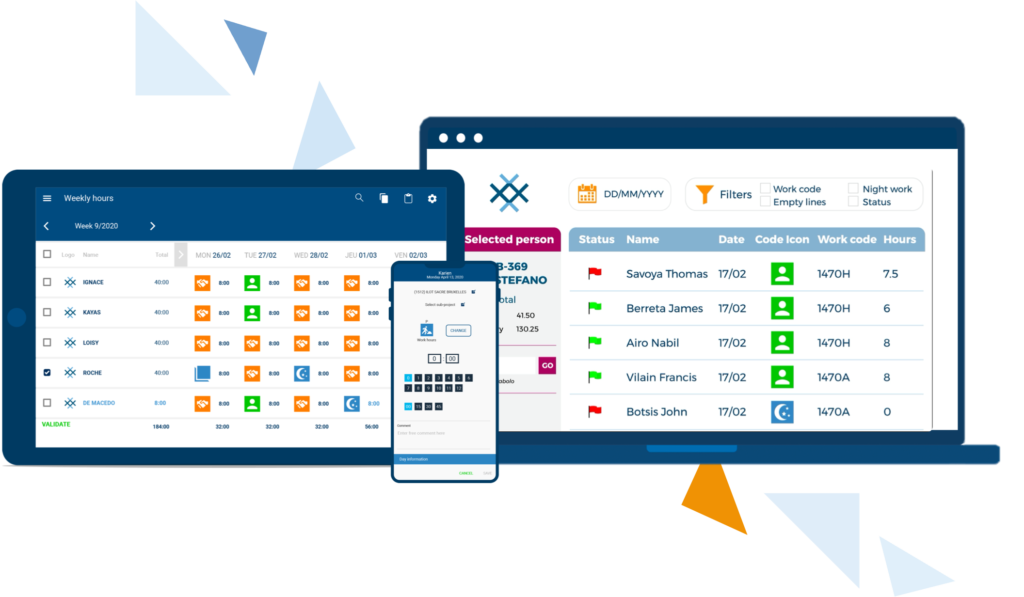
What construction trends will shape the industry landscape in 2022? To compete, construction companies need to keep up to date with the key trends impacting their business.
From new construction methods to innovative digital technology, the focus tends to be on increasing productivity, but not only.
1. The rise of Smart and Sustainable Cities.
Wifi-enabled lighting solutions, pedestrian and traffic sensors… as our modern world is changing, so are our cities. Some of the biggest tech companies in the world like Cisco, IBM or Microsoft, are massively investing in megaprojects to build what we now call “Smart Cities”.
Smart Cities aim to improve :
- Quality of life
- Environmental sustainability
- Economy
Those cities are improving the complexity of the construction process. Building smart megaprojects requires intense upfront planning in prior and state-of-the-art management all along the way.
Construction companies must prepare for this evolution, as the global smart city market is expected to grow by 20.5% to reach $2.5 trillion by 2025.
How to prepare for this construction trend
As smart cities rise, construction projects will, progressively, become more complex.
Construction companies will have to increase their technical skills. As high-tech is entering the worksite, investing in skills training will definitively become a necessity.
Combining health, safety, and sustainability will also lead to the adoption of best practices and high-level technology, to face stricter norms while ensuring profitability.
2. Persistent labor shortage
One of the most noticeable trends of the past few years in the increasing demand for labor.
While a shortage of workers is nothing new for the construction industry, it is not predicted to be any better.
In a recent Deloitte survey, 52% of engineering & construction executives indicate their organization is facing a severe labor shortage on the job site.
The challenge is getting stronger as the need for qualified candidates is rising, driven by the increasing complexity of construction projects. Data engineers, data scientists or software programmers are becoming a high-wanted resource.
To avoid projects delays or cancellations, losing projects bids or falling to respond to market needs, attracting new quality talent become an absolute priority.
How to face this construction trend
As we move to 2022, developing a strong HR talent acquisition strategy is key.
Talent retention, acquisition and training are three strategies that must go hand in hand. Liberating time for HR managers to manage talents is definitively part of the solution.
Besides, workflow automation can partly help facing a reduced workforce.
Leveraging digital technology is key to improve the existing workforce efficiency as well as to attract new one, as digital innovation can be a driver for attracting new young workers to the construction industry.
3. Increased pressure for performance.
Despite the industry positive response to the pandemic, profitability stays dangerously low.
The shortage of materials has led both to delivery delays and prices spikes, with an undeniable impact on construction projects’ margins.
According to Deloitte, the worrying factor is that while construction input costs have increased by more than 26% in a year in the US, average bid prices have seen only a 3,6% increase.
As they move between unpredicted delays and rising prices of goods, construction companies are under more pressure than ever to perform.
How to deal with this construction trend
Construction companies should focus on optimization. Whether it is through automated workflows or better cost management, the focus must be on adding efficiency, while controlling costs.
The integration of digital technology into key processes could help. Digitization not only makes these processes more efficient, but also allows for higher quality data collection and analysis.
Quality analytics and real-time data have a key role to play in making better-informed decisions.
A better insight into the current situation allows for a better apprehension of the upcoming situation, by developing coping strategies before having to face the problem itself.
To ensure profitability, construction companies should closely monitor:
- Onsite productivity
- Material and labor costs VS predicted budgets
- Their bids adequation to real costs
4. New construction modes
The challenge of ensuring profitability while demonstrating better sustainability is leading to new construction modes.
Modular and prefab construction took roots in the 1940s but are making a comeback over the past few years. They enable quick assemblage (from 20 up to 50% schedule compression) and lower costs, responding to the housing crisis around the world.
The popularity of those structures built off-site and then delivered to the intended location is rapidly growing. The global modular construction industry is predicted to reach $141.80 billion by 2027.
3D printing is another game changer for the construction industry.
This technology offers undeniable labor and material cost-cutting benefits and is finally coming to maturity, in response to growing demand worldwide for affordable construction solutions.
From printing materials to entire buildings, this technology has a great future and is expected to reach $63.36 billion by 2026, at a CAGR of 29.48% between 2021 and 2026.
How to benefit from this trend in construction
Modular, prefab or 3D printing, those new construction modes share common goals:
- Reduce construction costs, both material and human ones,
- Cutting schedule by significant amounts,
- Provide sustainable construction solutions.
Keeping up with innovation is essential to making construction processes more sustainable, efficient, and economical.
5. Automation through management software
The digitalization of the construction industry is experiencing unprecedented growth, alongside with the growing trend of automation.
From decision making to ensuring the respect of budgets and projects’ compliance, everything is getting harder, due to increased complexity and higher pressure on productivity.
In response, companies are improving their business practices and automating their processes. Manually entering data is one of those inefficient processes that can no longer be afforded.
From resource management to planning, management software is now a vital tool to stay competitive and optimizing operational efficiency.
In consequence, investments in management software are booming. The construction management software market is predicted to grow up to $2.73 billion by 2027, at a CAGR of 8.7% between 2020 and 2027.
How to prepare for this construction trend
With a booming software market dedicated to the construction industry, companies must develop an integrated digital ecosystem.
Productivity tracking, document management, absence planning, attendance monitoring… as the digital tools are increasingly numerous, they must be able to communicate between themselves.
To effectively leverage the digital transformation, construction companies must turn to integrated, collaborative and construction specialized software.
With a strong background in construction and digital technology, Traxxeo offers digital management tools dedicated to construction companies. The promise: collaborative, high-performance and user-friendly software.

6. Reinforced Safety Measures
Safety on site is not a new concern for construction companies. The construction industry is associated with the highest risk of fatal accidents at work.
The coronavirus pandemic has yet introduced new safety protocols. Amongst them:
- Wearing masks,
- Stricter hygiene protocols,
- Physical distancing,
- Regular covid-19 testing and onsite temperature scans.
Besides those covid-19 safety measures, the focus is really on risk prevention in the workplace.
A growing number of construction companies are now prioritizing workers health and safety. From redesigned equipment for women to new digital technologies, companies are investing in all kinds of risk preventions.
All of which aim to prevent hazards upfront, in order to minimize the chance for accidents to occur.
How to handle this construction trend
Ensuring safety in the workplace is an ongoing task. However, there are some best onsite safety practices to put into place to prevent risks.
This goes from efficient risk identification to up-to-date safety trainings and efficient communication.
Also, leveraging technology is crucial in preventing accidents in the workplace.
A few examples of safety-related innovations:
- Robots handling tasks associated with the highest injury rate, such as building scaffolding,
- Drones, gaining access to areas that are difficult for workers to reach,
- Mobile application & software, giving access to any workers admin status and training certificate,
- Presence control solutions, providing the attendance list at all times,
- Access control technology, allowing the control of site access for each worker based on their admin documentation.
From predicted construction trends to new realities
Advances in technologies have had significant impact on the construction industry, shaping new trends for 2022.
Any construction company willing to succeed in the coming years and stay ahead of the competition must keep up-to-date with these major trends.
Supporting the digital transformation of construction companies since 2008, the Traxxeo team will be more than happy to support your innovation journey.
To see how we can help you improve your business processes with digital technologies, get in touch.
